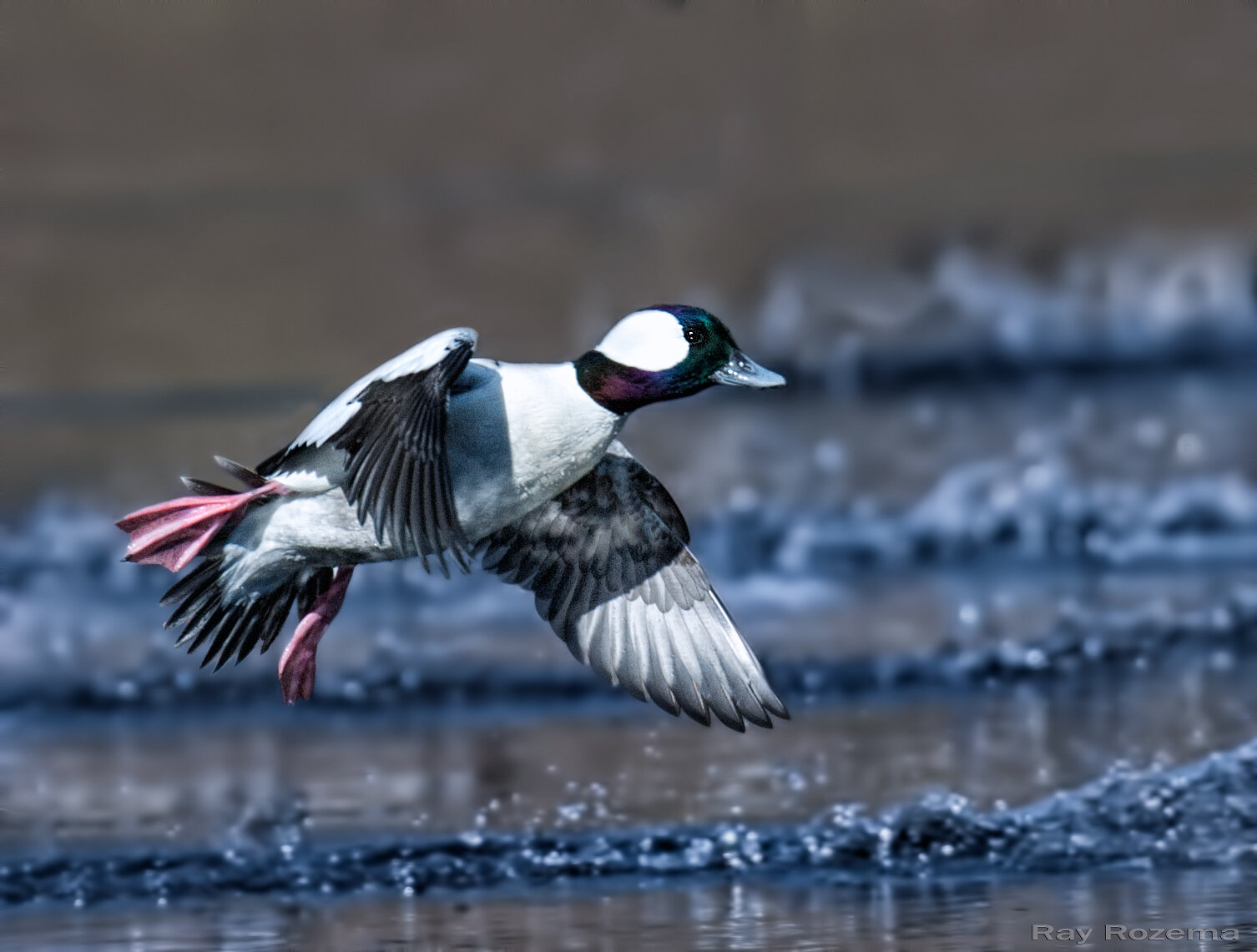Woodfords, December 19, 2019
Our total this year (2019) for the Woodfords Christmas Bird Count was 90 species. 15 counters in 5 areas counted 3282 individual birds, most before lunch at 1:30pm. Several of us went back out after lunch and added 3 species, Lewis’s Woodpecker (5), one Merlin at Indian Creek Reservoir and 14 Wild Turkeys along Carson River Road. Looking back at the history of the count, (CAWO is the code for this count) I see that there are no count totals recorded prior to 1990. We believe that the count started in 1975 and data has been submitted every year since. We thought that 90 species might be a record high but the high is 91 back in 2012. The low species total is 62 in 2002. The average rounds off to 80. We did not add any new species to the count list this year but a few species had been observed on fewer than 5 counts. Ross’s Goose has only occurred on 3 counts, Greater White-fronted Goose, Turkey Vulture, Lewis’s Woodpecker and Say’s Phoebe on only 4. Another highlight was 170 Pinyon Jays observed at Indian Creek Reservoir. And a non-bird highlight was a beautiful and very cooperative Bobcat!
Thanks again to everyone who helped! Compiler Dan Brown.
Sacramento, December 21, 2019
The 71st Sacramento Christmas Bird Count took place on December 21, 2019. The weather was most acceptable, with some patchy morning fog giving way to mostly cloudy skies, but no rain and highs in the mid 50s.
158 species were recorded on Count Day, with 6 additional species being recorded during Count Week for a grand total of 164; only 5 shy of our record high of 169 which was reached in 2015. Count week birds included Eared and Horned Grebes, Black- bellied Plover, Western Sandpiper, Forster’s Tern, and Chipping Sparrow.
The clear highlight of the count was the continuing young male Vermilion Flycatcher at Tanzanite Park in Natomas, which was originally found there in late October, and was nice enough to stick around and become a first for our count, while getting redder and redder by the day.
Other highlights included a Hairy Woodpecker in West Sacramento (first for the count in 20 years), a pair of Red Crossbills at East Lawn Cemetery (an excellent find in a year when montane species started showing up in fall, but had tapered off dramatically by December), a swamp sparrow at Yolo Bypass, and a splendid variety of gulls at the Yolo County Landfill including a continuing Lesser Black-backed (only the 2nd for the count), and 2 Glaucous Gulls.
Overall themes of this year’s count were lower than average numbers of large waterfowl (geese and swans), but continuing increases in dabbling ducks, especially pintail, shoveler, and all 3 teal species. A big bounce-back in the number of Canvasback was nice to see, and a Greater Scaup (the first for the count in 5 years), and an above average 3 Barrow’s Goldeneye were a nice surprise (they are quite uncommon in our circle). We had new high counts for long-billed dowitcher (3,830), Townsend’s Warbler (an incredible 13!), and Common Raven(65) as they continue to invade the valley. 4 Pacific Wrens was the highest total for our count in15 years of that species, and footage of the bird along Bannon Creek in Natomas is being reviewed and may in fact have been the much rarer Winter Wren (the jury is still out on that one!). Compiler Dan Williams.
Folsom, December 29, 2019
We ran the 42nd Folsom Christmas Bird Count on December 29, 2019, on a cool, overcast and breezy day. We had 76 counters in 32 teams, and five parties did some owling. The species total was 143 (if including Mute Swan), outside the historic range of 123 and last year’s high of 148. Unlike counts on the flats of the Valley, this count struggles to come up with waterfowl and shorebirds. We had a single Greater White-fronted Goose and three Cackling Geese, but missed Snow Geese and Tundra Swans. Invasive Mute Swans were at a new high of 61. We missed Lesser Scaup, Canvasback, and Northern Pintail, but did pick up two Cinnamon Teal. For the second year in a row, we recorded only one Wood Duck. Barrow’s Goldeneye were low at only 20, while Hooded Mergansers were up to 43. We missed Long-billed Dowitchers, but two Dunlin were good for this count. Among over 17,000 total gulls, we had a single Mew Gull and an adult Glaucous Gull. Two Osprey were found along with 14 Bald Eagles, seven Ferruginous Hawks, six Rough-legged Hawks, and one Golden Eagle. We also found five Merlins, five Prairie Falcons, three Peregrine Falcons, a single Barn Owl, two Burrowing Owls, and one Western Screech-Owl. Only one Lewis’s Woodpecker was found.
The most shocking result was missing two species for the first time: Loggerhead Shrike and Horned Lark. Both have been declining, but a complete miss of Horned Lark is really unex- pected. Yellow-billed Magpies were up modestly to 65. At 46, Common Ravens came in one shy of the record. Other highlights included singles of Steller’s Jay, Brown Creeper, Red-breasted Nuthatch, and two Golden-crowned Kinglets. Four Varied Thrushes could have easily been missed, along with a single White-throated Sparrow and Common Yellowthroat. Two Bell’s Sparrows and eight Lawrence’s Goldfinches were excellent finds; Purple Finches had a good showing with 48, but 93 Pine Siskins were a surprise in a season where they don’t seem widespread. We found 13 Tricolored Blackbirds--a species increasingly easy to miss in rapidly expanding Folsom.
Thanks to all who participated and especially to the area leaders who do a lot of extra work organizing their teams. Compiler Chris Conard.





